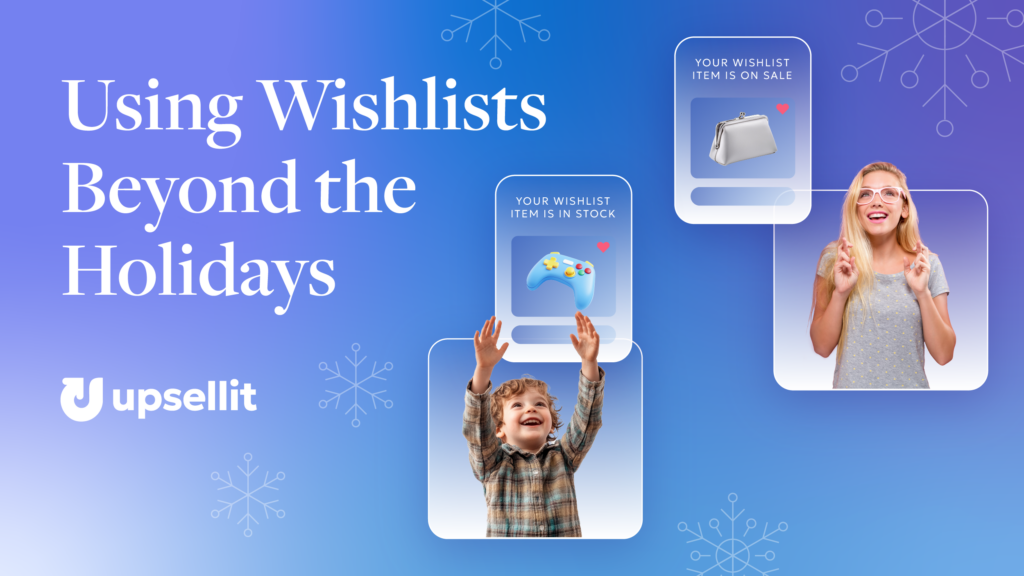When people think of wishlists, they typically associate them with special occasions like birthdays, weddings, and holidays. However, in the world of ecommerce, wishlists are a valuable tool that extends far beyond the holiday season.
For retailers, wishlists enhance the shopping experience by allowing customers to easily save their favorite items or share them with friends and family, leading to increased engagement and conversions. Read on to learn how you can make the most of wishlists in your holiday marketing strategy and beyond.
Why Wishlists Work in Ecommerce
Shoppers often express interest in products but hesitate to add them to their cart due to timing, finances, or indecision. Wishlists bridge this gap by allowing consumers to save items for later, share with others, or keep track of potential purchases. But how can you turn these passive interests into active conversions?
Wishlists not only provide convenience for shoppers but also valuable data for retailers. By analyzing wishlist activity, you can identify trending products, gauge demand, and better understand customer preferences. This insight allows you to tailor your omnichannel marketing strategies, such as featuring popular wishlist items in your emails, offering targeted discounts on-site, or prioritizing restocks on high-demand products.
Actionable Marketing Strategies Using Wishlists
Explore these on-site and email marketing strategies that harness the power of wishlists to recover lost sales and drive more purchases.
1. Boost Sales with Back-in-Stock Alerts
After the holiday rush, popular products often take time to restock, which can result in lost sales when shoppers can’t get the items they want. By adding a wishlist feature with back-in-stock notifications, you can turn this challenge into an opportunity while capturing valuable leads. Once the item is restocked, automatically send an email to customers who signed up for alerts, motivating them to complete their purchase before it sells out again.
To further drive conversions, include a limited-time offer or free shipping code in the back-in-stock emails, creating urgency and keeping customers engaged with their original wishlist items.
2. Turn Abandoned Carts into Wishlist Data
Many shoppers treat shopping carts like wishlists, planning to return later to complete their purchase. To enhance their experience and reduce abandonment, offer to save their cart when they attempt to leave your site without buying. This not only captures new leads but also helps them easily track their desired items. You can further motivate purchases by offering small incentives, encouraging immediate action or enticing future sales.
Once they opt in to save their cart, follow up with a series of three reminder emails—sent immediately, after 2 days, and again after one week—highlighting their pending items and any limited-time discounts to drive conversions.
3. Encourage Shared Wishlists to Attract New Shoppers
A key advantage of wishlists is their shareability. Encourage customers to share their wishlists with friends and family during special occasions, increasing product visibility and attracting new potential buyers looking to purchase gifts.
Incorporate a ‘Drop a Hint’ button on your product pages, allowing shoppers to easily share specific items with a loved one. Send one email to the recipient showcasing the wishlist item, and another to the wishlist owner with personalized product recommendations, encouraging them to expand their favorite collection.
4. Track Product Costs with Price Drop Alerts
No matter the season, price-sensitive shoppers are always on the lookout for discounts and price drops. Wishlists provide an easy way for customers to monitor prices on their favorite products. Ecommerce retailers can take advantage of this by sending targeted price-drop alerts or exclusive discount offers for wishlist items, driving conversions when prices dip.
During major sitewide sales, notify customers of markdowns on their wishlist items and sweeten the deal with an extra incentive, such as a limited-time offer or free shipping, to encourage them to complete their purchase. This personalized approach not only boosts sales but also enhances the customer experience by delivering timely, relevant offers.
Don’t Let Next Year Be List-less!
Wishlists are a powerful yet often overlooked tool in holiday marketing—and they can drive conversions year-round. By giving customers an easy way to track and share their favorite products, you not only enhance the shopping experience but also gain valuable insights to fuel your marketing strategies.
Looking to elevate your email game? Download Upsellit’s Remarketing Experience Case Study now to and discover expert tactics to boost your email remarketing.
